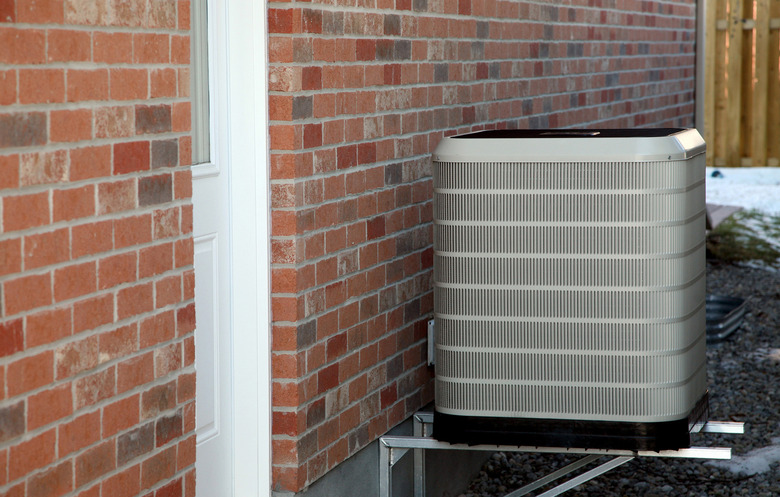How To Increase Heat Pump Efficiency
A heat pump moves heat; it can move thermal energy from a cooler outdoor area to your indoors or from a cooling system into the ambient air of your house. Heat pumps do not generate or convert heat. Poorly installed or faulty heat pumps can be inefficient. However, a few steps can help you increase your heat pump's efficiency and cut your energy bills.
Change Your Air Filter
Change Your Air Filter
A dirty filter slows down air flow to your heat pump, resulting in energy waste as the system works harder to keep your space cool or warmer. Change your filter regularly or when it looks dirty. Energy Star, a U.S. Environmental Protection Agency voluntary program, advises that you change your filter every month or at least once every three months, especially during the summer and winter when the system works hardest.
Fix Duct Leaks
Fix Duct Leaks
Check the duct work of your pump for leaks and fix them. In a typical house, 20 percent of the air moving through ducts is lost due to poorly connected ducts, or to leaks and holes in the ducts. You can tell whether ducts are performing poorly if you have high energy bills or if you have difficulty cooling or heating some rooms in your house. Seal any leaks and holes on ducts using a metal tape or mastic sealant. Also, seal all the connections where the ducts meet the ceiling, floors or walls. A well-functioning duct system increases your pump efficiency by ensuring that conditioned air is not lost during distribution.
Service Your Pump
Service Your Pump
Servicing your heat pump every year can improve efficiency. Tune up your thermostat settings, tighten all connections and lubricate all moving parts. Also check your controls system and ensure that your heat pump starts, functions and goes off safely and properly. Check the blower system to correct any airflow problems, which, according to Energy Star, can reduce your heat pump's efficiency by 15 percent. Because contractors get busy during the summer and winter, it is advisable to service your pump in the spring or fall.
Use a Thermostat
Use a Thermostat
A programmable thermostat helps you adjust the temperature in your house according to settings that take effect at different times of day. For example, during warm days, you can set your programmable thermostat to allow the temperature in your house to rise when no one is at home. You can then set it to turn on air conditioning an hour before you arrive. You save energy and decrease the demands placed upon your heat pump during the day. Thermostat expansion valves also ensure more accurate control of air flow to indoor coils, according to the U.S. Department of Energy.
Cite This Article
MLA
Stephen, Mike. "How To Increase Heat Pump Efficiency" sciencing.com, https://www.sciencing.com/increase-heat-pump-efficiency-23977/. 24 April 2017.
APA
Stephen, Mike. (2017, April 24). How To Increase Heat Pump Efficiency. sciencing.com. Retrieved from https://www.sciencing.com/increase-heat-pump-efficiency-23977/
Chicago
Stephen, Mike. How To Increase Heat Pump Efficiency last modified March 24, 2022. https://www.sciencing.com/increase-heat-pump-efficiency-23977/
